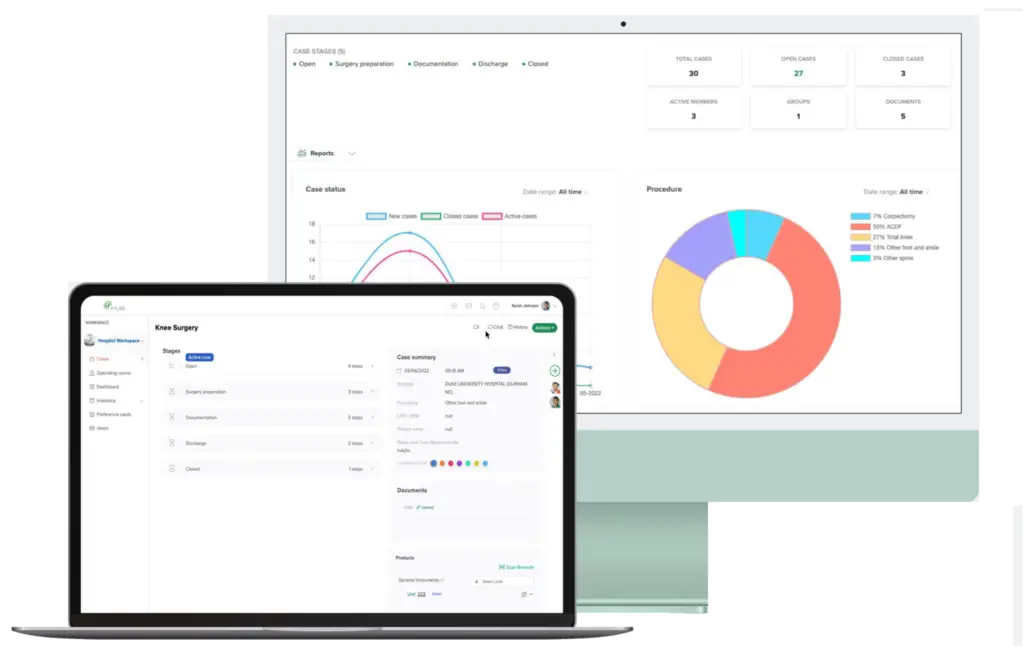Ambulatory Surgery Centers (ASCs) play a vital role in delivering outpatient surgical care, offering a more convenient and cost-effective alternative to hospital-based surgeries. To maximize efficiency and improve patient outcomes, ASCs are increasingly adopting modern workflow strategies. This article delves into these strategies and their positive impacts on patient care and operational efficiency.
Importance of Workflow Optimization
Enhancing Patient Care
Optimized workflows ensure that patients receive timely and efficient care. Streamlined processes reduce wait times and improve the overall patient experience, contributing to higher satisfaction and better outcomes.
Operational Efficiency
Efficient workflows minimize bottlenecks and reduce the likelihood of errors. This leads to smoother operations, better resource allocation, and reduced costs, all of which are critical for the sustainability of ASCs.
Compliance and Safety
Modern workflow strategies help ASCs comply with regulatory standards, such as those set by the Centers for Medicare & Medicaid Services (CMS). Compliance ensures patient safety and eligibility for reimbursements.
Key Modern Workflow Strategies
1. Centralized Scheduling Systems
Centralized scheduling systems are essential for managing surgical appointments, staff assignments, and resource allocation. These systems provide a unified platform that enables real-time updates and reduces scheduling conflicts.
Impact on Patient Outcomes
- Reduced Wait Times: Patients experience shorter waiting periods, leading to increased satisfaction.
- Better Resource Management: Ensures that necessary equipment and personnel are available, minimizing the risk of delays or cancellations.
2. Electronic Health Records (EHRs)
EHRs are critical for maintaining accurate and up-to-date patient information. They facilitate seamless data sharing among healthcare providers, ensuring that everyone involved in patient care has access to the same information.
Impact on Patient Outcomes
- Enhanced Coordination: Improves communication among healthcare teams, leading to better-coordinated care.
- Informed Decision-Making: Provides healthcare providers with comprehensive patient histories, aiding in accurate diagnosis and treatment planning.
3. Real-Time Data Analytics
Data analytics tools allow ASCs to monitor and analyze various performance metrics. By identifying trends and areas for improvement, these tools support data-driven decision-making.
Impact on Patient Outcomes
- Proactive Care: Identifies potential issues before they become critical, allowing for timely interventions.
- Continuous Improvement: Enables ASCs to refine processes and enhance the quality of care provided.
4. Automated Inventory Management
Automated systems for inventory management ensure that ASCs have the necessary supplies and equipment on hand. These systems track inventory levels in real-time and automate reordering processes.
Impact on Patient Outcomes
- Reduced Risk of Shortages: Ensures that essential medical supplies are always available, preventing disruptions in patient care.
- Cost Efficiency: Reduces wastage and helps in maintaining an optimal inventory, leading to cost savings.
5. Patient Engagement Tools
Patient engagement tools, such as patient portals and mobile apps, facilitate better communication between patients and healthcare providers. These tools allow patients to access their health information, schedule appointments, and receive reminders.
Impact on Patient Outcomes
- Improved Compliance: Patients are more likely to follow pre- and post-operative instructions when they have easy access to information.
- Higher Satisfaction: Enhances the patient experience by providing convenient access to healthcare services.
Case Studies
Case Study 1: Improving Surgical Efficiency at Summit Ortho
Summit Ortho implemented a centralized scheduling system and automated inventory management tools. As a result, they saw a 30% reduction in scheduling conflicts and a 20% decrease in inventory costs. Patient satisfaction scores improved due to reduced wait times and better resource availability.
Case Study 2: Enhancing Patient Care at Cary Ortho
Cary Ortho integrated EHRs and real-time data analytics into their workflows. This led to better-coordinated care and more informed decision-making. Patient outcomes improved significantly, with a notable reduction in post-operative complications and readmission rates.
How HUB Healthcare Can Help
HUB Healthcare offers a comprehensive solution designed to enhance communication in healthcare, streamline care coordination, and improve overall workflow efficiency. Our platform includes features such as medical case management software, healthcare document management, and healthcare analytics to ensure that all aspects of patient care are optimized. By leveraging HUB Healthcare’s robust tools, organizations can reduce workflow bottlenecks, automate repetitive tasks, and facilitate better collaboration among healthcare providers. This not only improves work quality but also enhances patient outcomes, making HUB Healthcare an essential partner in achieving healthcare excellence.
Conclusion
Adopting modern workflow strategies is essential for Ambulatory Surgery Centers to enhance patient care, improve operational efficiency, and ensure compliance with regulatory standards. By leveraging centralized scheduling, EHRs, data analytics, automated inventory management, and patient engagement tools, ASCs can achieve significant improvements in patient outcomes and overall performance.




